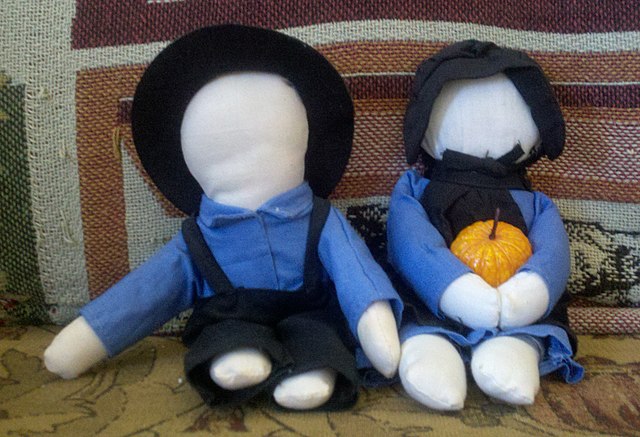The Amish and Mennonites are both Christian denominations that originated from the Anabaptist movement in Europe during the 16th century. Anabaptists were part of the Radical Reformation that rejected infant baptism. In 1693, there was a split among Anabaptists living in Alsace, France. Those who followed Jacob Amann emphasized their separation from the world and became known as "Amish." Anabaptists who rejected Amann's proscriptions as too harsh eventually became known as "Mennonites" for their adherence to the teachings of the Dutch Theologian Menno Simons. While the two groups share similar beliefs and have common historical roots, there are some differences between them in terms of their practices, lifestyle, and level of adherence to traditional customs.
-
Beliefs and Theology:
- Both the Amish and Mennonites are considered to be part of the larger Anabaptist tradition, which emphasizes adult baptism and the separation of church and state.
- Mennonites generally have a more diverse range of beliefs, with variations across different groups and congregations. They tend to have a more moderate approach to technology and modernity.
- Amish beliefs are typically more conservative and traditional, with a focus on simplicity, humility, and separation from the world. They often strive to maintain a distinct cultural identity and reject many forms of modern technology.
-
Lifestyle and Practices:
- Amish communities are known for their strong emphasis on communal living and agricultural work. They typically live in close-knit, rural communities and practice simple, self-sufficient lifestyles.
- Mennonites also value community and often engage in farming and other traditional occupations, but they tend to have a broader range of professions and may be more integrated into mainstream society.
- Amish communities adhere strictly to a set of rules and guidelines known as the Ordnung, which governs every aspect of their lives, including dress, technology use, and social customs.
- Mennonites generally have more flexibility in their lifestyle choices and may vary in their level of adherence to traditional practices.
-
Dress and Appearance:
- Amish dress in distinctive, old-fashioned clothing that reflects their commitment to simplicity and modesty. They often wear plain, homemade garments, and women typically wear head coverings.
- Mennonite dress can vary significantly depending on the specific group and cultural context. While some Mennonites may dress conservatively, others may adopt contemporary clothing styles.
-
Technology and Modernity:
- Amish communities generally have strict limitations on the use of technology and modern conveniences. They tend to reject electricity, automobiles, and other modern inventions, preferring more traditional methods. Amish youth are allowed to use modern technology prior to joining the church, however, and many Amish businesses incorporate modern technology into their businesses but not their homes.
- Mennonites are generally more accepting of technology and may use electricity, cars, and modern appliances. However, the level of acceptance varies among different Mennonite groups, and some may also choose to limit their use of certain technologies.
It's important to note that both Amish and Mennonite communities are diverse, and there may be variations in practices and beliefs among different subgroups or regions. The level of strictness and adherence to traditional customs can also vary within each community. No matter their differences, however, both the Amish and Mennonites appreciate good cooking like Shoofly Pie and Hamloaf!


4 comments
I lived near the Amish and Mennonite for years and found them to be very nice. The Mennonite are more social and the women wear colorful clothing. They are lovely people. Some were our good friends. They helped us in need and we helped them.
When I was doing genealogy on my family, I learned that we were from an Amish group who had immigrated to Woodford County, IL from Alsace during the 1830s. They maintained that lifestyle until the 20th century when they became part of the local Mennonite Church. When I was young I went to that church. Later members of the family joined either the Church of the Brethren or the Methodist Church. I find it interesting that many Methodist Churches jointed with the Church of the Brethren, since they come from different historical backgrounds. When I was in High School, I joined the Baha’i Faith, but I enjoy finding out the history of my family and its spiritual traditions.
Keep me posted. I have beeen interested in the Amish for more then 60 years
Thank you for explaining the differences between Amish and Mennonites. I always knew there were differences but not the exact differences.
Can you say as to where in the US are the populations of Amish and Mennonites located.
I love to be able to support their communities, i.e purchase their products.